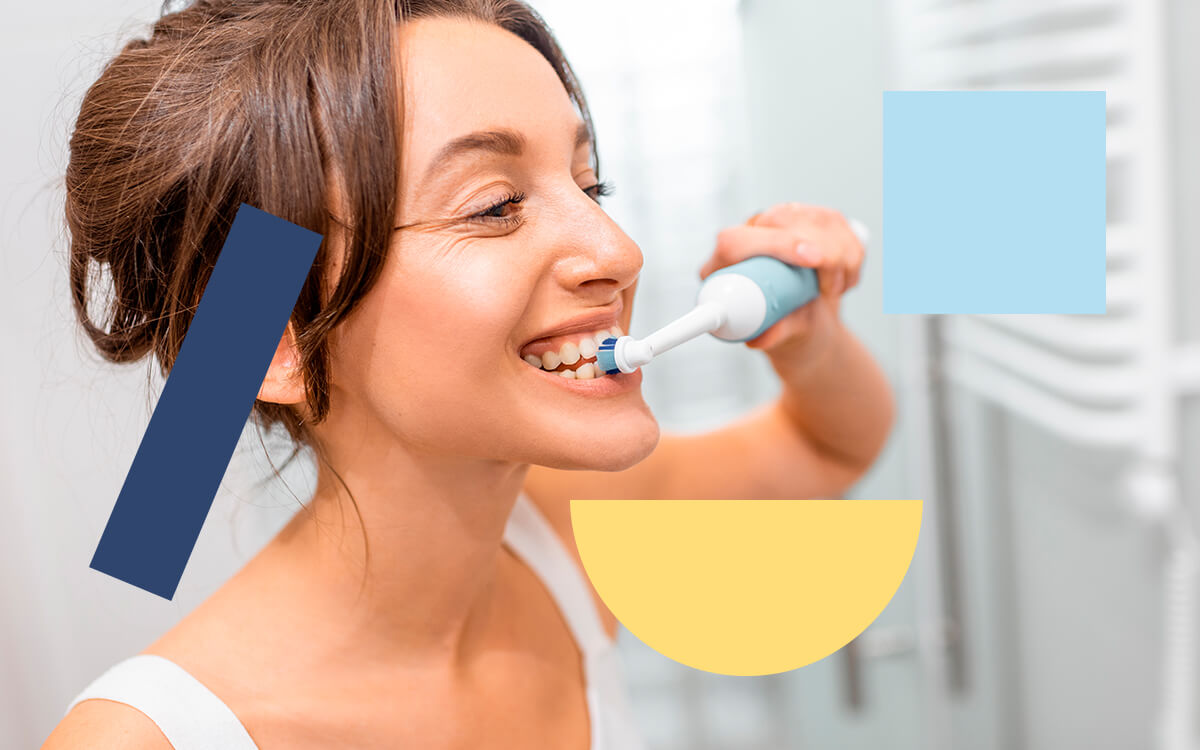 Oral health
Oral health
What to consider when choosing the best electric toothbrush?
In order to ensure proper oral hygiene, today there are multiple types of toothbrushes to choose from. If you also want to...

Peri-implantitis is an inflammation of the tissue surrounding the inserted implant which, due to the action of microorganisms, becomes inflamed and can result in the progressive destruction of the mucous membrane and bone tissue, leading to implant instability.
This disease acts similarly to periodontitis and is the most common cause of implant loss. The microorganisms responsible for peri-implantitis are gram-negative anaerobic bacteria, very similar to those that cause pyorrhea, and other gram-positive bacteria, which are only found in peri-implantitis.
But how can you tell if you have peri-implantitis? If your gums start to redden, change color and bleed slightly, it could be a warning sign of the onset of peri-implantitis.
As the inflammation progresses and penetrates the bone, you may begin to notice a discharge of pus and experience pain when chewing, with some movement in the implant.
Peri-implantitis refers to the formation of an infection around the dental implant.
This is an infection caused by bacteria that develops around dental implants and, if left untreated, can be a serious condition that can even lead to the loss of the implant.
Peri-implantitis is due to the presence of bacteria that may develop immediately after implantation or at a later time due to poor oral hygiene.
If peri-implantitis appears immediately after implant placement, it is called early peri-implantitis because it occurs before osseointegration, i.e. the welding between the bone and the implant.
If peri-implantitis appears later, the cause is usually poor daily oral hygiene and lack of dental check-ups.
Its symptoms are visible and are characterized by swelling and bleeding.
The first stage of the disease is called mucositis, a reversible inflammatory disease of the soft tissues adjacent to the dental implant in which the gums become reddened and recessed leaving part of the underlying implant visible.
If mucositis is not treated in time, so-called pockets (or sacs) are formed where dental plaque and food debris accumulate and are difficult to remove with a toothbrush or dental floss. In these cases, only a cleaning and dental hygiene session can help, as the pockets can be more than 0.5 mm deep. Once the infection has reached the dental bone, bone destruction will begin which, depending on its magnitude, will compromise the support of the implant.
First of all, the periodontium, the set of tissues that surround and protect the tooth from external agents, will be different in a natural tooth than around an implant.
The tissues surrounding the dental implant lack the periodontal ligament, which in natural teeth is responsible for cushioning the forces of chewing, among other functions. Without this tissue interposed between the implant and the bone, the probability of attack by microbial agents increases exponentially.
In addition, periodontal fibers do not adhere to an implant as they do to natural teeth and this is one of the main risk factors for the development of peri-implantitis.
The etiology of peri-implantitis is multifactorial and triggering factors include:
Recognizing the symptoms of rejection of dental implants at an early stage is crucial to prevent their loss. The main signs of peri-implantitis, which should not be underestimated, are as follows:
In the presence of one or more of the above symptoms, an appointment should be booked immediately with the dentist, who will carefully assess the situation and attempt to treat the condition. This dental disease is quite difficult to treat and possible therapies do not always respond effectively.
Once the presence of ongoing peri-implantitis has been verified (by means of X-rays and gingival probing), the area is carefully disinfected and freed of bacteria. For this purpose, thorough professional oral hygiene sessions are carried out combined with the application of specific topical antibiotics or, if necessary, laser therapy sessions.
These treatments work very well in the case of peri-implantitis in the initial phase (peri-implant mucositis). If it is an acute bacterial infection, it will be more complicated to save the implant and avoid its removal.
The treatment of peri-implantitis can vary from non-surgical to surgical techniques, depending on the level of bone loss observed through diagnostic examination.
In the initial phase of perimplantitis, treatment consists of momentary removal of the prosthesis to facilitate decontamination of the implant surface, both through the application of chemical adjuvants such as chlorhexidine and mechanical removal of plaque.
However, while non-surgical treatment is effective in mucositis, since the only tissues affected are soft tissues, the remedy in cases of peri-implantitis is usually associated with surgical techniques.
The first option is resective surgery, which, as the word itself indicates, consists of the removal of peri-implant pockets by removing the granulation tissue resulting from microbial contamination. In many cases, both professional surgical remodeling of the hard tissues and implant surface implantation may be necessary to prevent or reduce possible future microbial reinfection. It is also useful to apply local antibiotics at surgery to increase the response to treatment.
Another surgical solution consists of regenerative techniques aimed at restoring bone availability with the use of biomaterials (particulate bone grafts and barrier membranes); however, even in these cases, it will be necessary to first remove the granulation tissue and to have decontaminated the surface of the dental implant. However, these treatment options are not always applicable, as they are closely related to the type of bone defect.
Regardless of the treatment chosen, whether non-surgical or surgical, it may be useful to modify the dental implant to facilitate cleaning at home.
Finally, in more advanced cases, where bone loss is greater than 50% of the implant length, implant removal may be unavoidable with subsequent removal of the granulation tissue for facilitate healing of the treated site.
Trusting the right professional for implant placement is the first step to prevent peri-implantitis. Not only because he/she will insert the implant correctly, but also because he/she will inform the patient about the importance of oral hygiene and controls after implant placement.
The best way to avoid peri-implantitis is to pay close attention to the timely and correct removal of dental biofilm both at home (with toothbrush, floss and toothbrush) and in the dental office, through professional hygiene sessions that effectively clean the implant surface.
Frequent check-ups are of paramount importance for the long-term maintenance of implants, as they allow the dentist to diagnose and treat early signs of peri-implant inflammation, which may go unnoticed by the patient, and thus prevent mucositis from progressing to peri-implantitis.
It must be said that the prevention of peri-implantitis begins at the time of implant placement, since a poorly placed implant, the choice of an inadequate prosthesis or work performed in a non-sterile environment can be some of the main culprits of early peri-implantitis.
If you notice bleeding gums, purulent discharge and sometimes foul odor, an oral infection is likely to be in progress.
Many times the mobility of an implant may be due only to the prosthetic crown. If it is the dental implant that moves, it is a sign of loss of implant integration, so a medical examination by a dental professional is essential.
The only way to prevent peri-implantitis is, first of all, to rely on professionals specialized in the field, to maintain proper home and professional hygiene, and to attend regular check-up appointments.
 Oral health
Oral health
In order to ensure proper oral hygiene, today there are multiple types of toothbrushes to choose from. If you also want to...
 Orthodontics
Orthodontics
In the days following the start of orthodontic treatment, it is very common to experience certain discomfort and pain that will gradually disappear. However...
This disease acts similarly to periodontitis and is the most common cause of implant loss. The microorganisms responsible for peri-implantitis are...